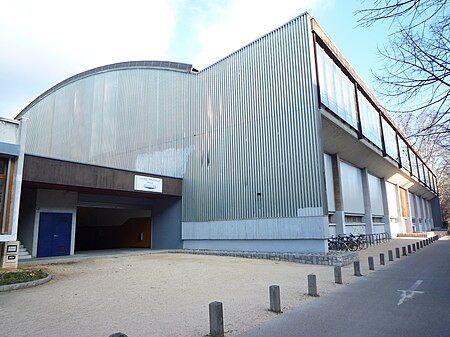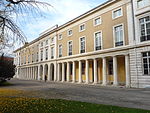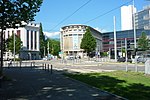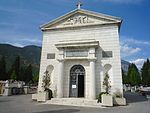La Patinoire Municipale
French sports venue stubsIndoor ice hockey venues in FranceOlympic ice hockey venuesSports venues completed in 1963Sports venues in Grenoble ... and 2 more
Venues of the 1968 Winter OlympicsWinter Olympic venue stubs

La Patinoire Municipale (English: The Municipal Ice Rink) is an indoor ice venue located in Grenoble, France. Completed in 1963, it hosted some of the ice hockey competitions for the 1968 Winter Olympics. During those games, it seated 2700. The venue also hosted the 1964 European Figure Skating Championships. In 2001, the building became a gymnasium called Halle Clemenceau.
Excerpt from the Wikipedia article La Patinoire Municipale (License: CC BY-SA 3.0, Authors, Images).La Patinoire Municipale
Boulevard Clemenceau, Grenoble Secteur 5
Geographical coordinates (GPS) Address Nearby Places Show on map
Geographical coordinates (GPS)
| Latitude | Longitude |
|---|---|
| N 45.184722222222 ° | E 5.7388888888889 ° |
Address
Anneau de vitesse de Grenoble
Boulevard Clemenceau 18
38100 Grenoble, Secteur 5
Auvergne-Rhône-Alpes, France
Open on Google Maps








